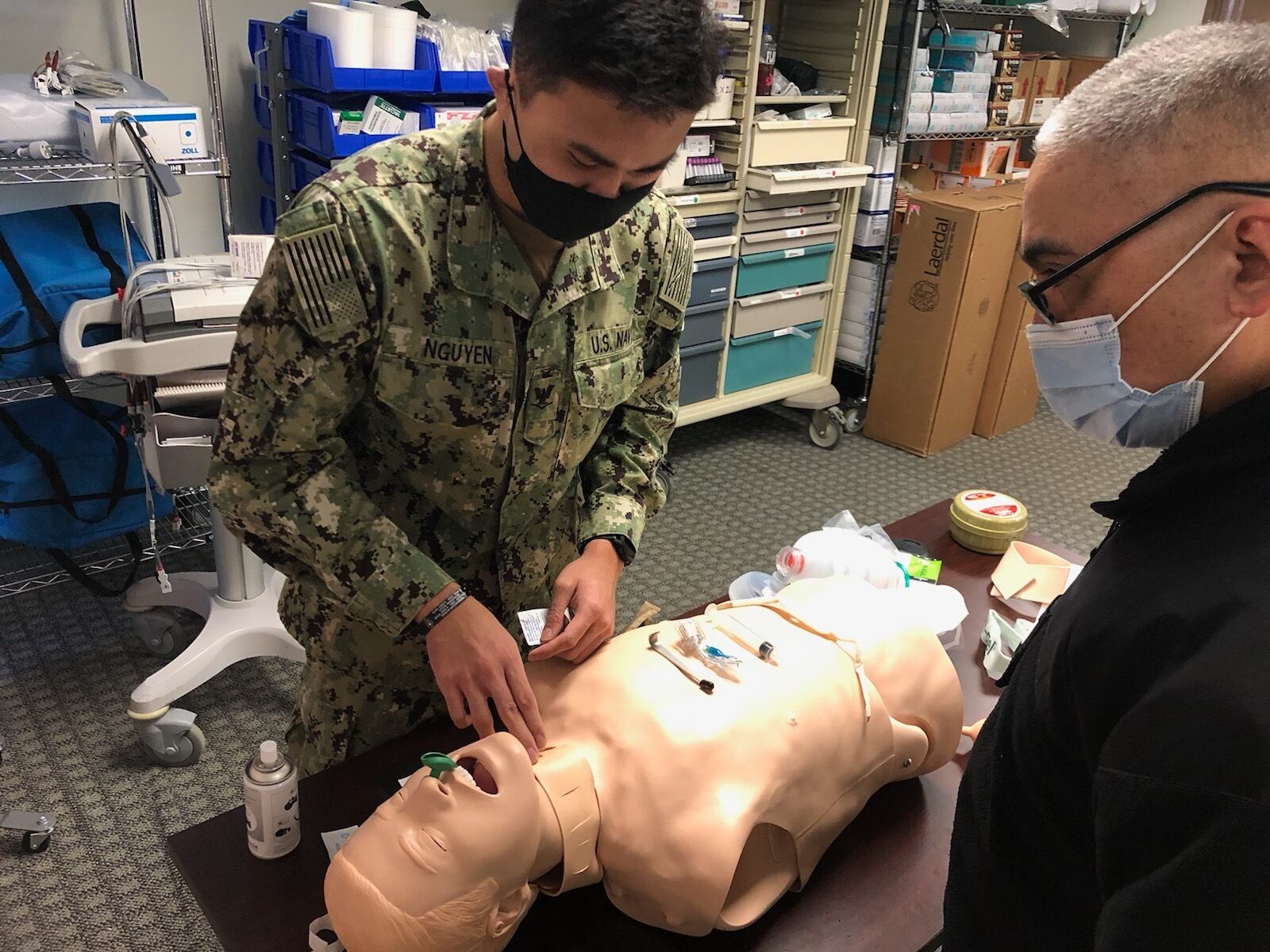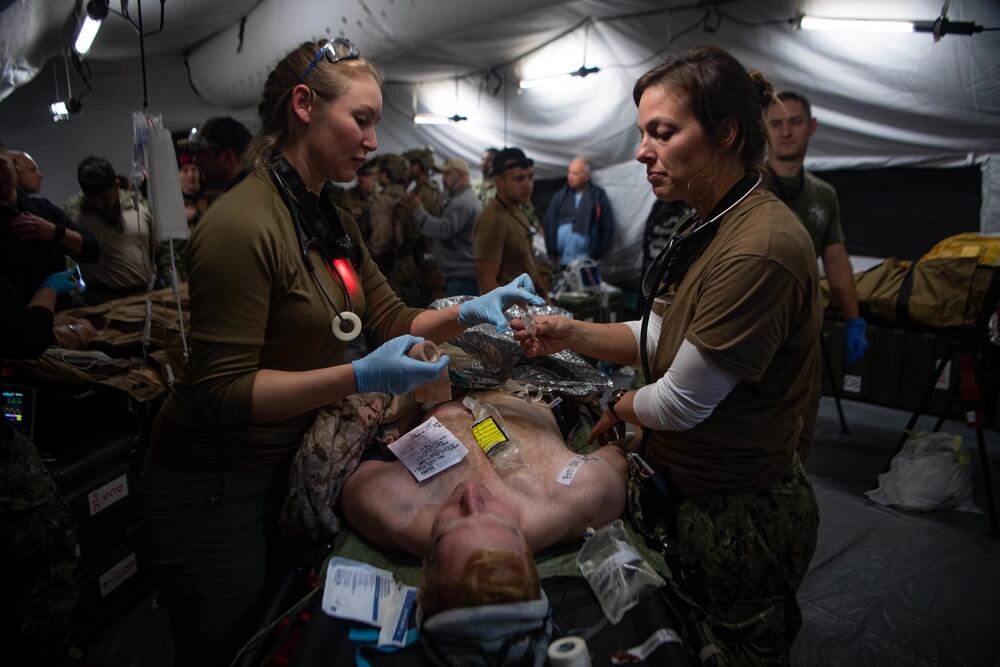As the Navy continues to prepare for distributed maritime operations, in part to counter China, the service is deploying trauma and surgical supplies to Guam so medical teams can conduct surgeries in remote areas of the Indo-Pacific region.
The portable equipment in these medical kits include ventilators, bandages, blood refrigerators, and components necessary to conduct surgery in an operational environment, allowing Expeditionary Resuscitative Surgical System crews to provide care afloat, undersea or ashore during combat operations with limited personnel.
“This is the first of a number of medical capability sets that we will sustain in forward locations to better support our sailors and Marines,” Rear Adm. Darin Via, acting surgeon general, said in a Navy news release.
ERSS crews conduct damage control surgery, emergency surgery and advanced trauma surgery, all in a self-sustaining environment., They include a surgeon, an anesthesia provider, an emergency room physician, two nurses and two hospital corpsmen. As a result, the equipment they use must be portable, requiring only power, water, lighting and space.
RELATED

The pre-positioned medical supplies support the Navy’s concept of distributed maritime operations — more ships and land-based units in more locations, spreading out firepower and sensors across wide swaths of U.S. Indo-Pacific Command’s area of responsibility.
“It is all part of a greater strategy to align our medical force to best support distributed maritime operations,” Via said in a statement.
Distributed operations allow the Navy and Marine Corps to “exploit uncertainty and achieve surprise,” according to a tri-services maritime strategy document released in 2020.
Capt. Matt Marcinkiewicz, the head of Naval Medical Readiness Logistics Command, said that “having this medical equipment forward-deployed quickens response times and reduces risk to operational personnel in austere locations.”
“Having [Expeditionary Resuscitative Surgical System] capabilities in Guam will enhance our Naval forces strategic agility, operational reach and tactical flexibility,” he said.
Naval Medical Readiness and Training Command Guam, which supports U.S. Naval Hospital Guam and trains sailors and Marines to provide medical support to deployed units, is also poised to host future Navy ERSS teams at their medical facility in the future.
“Staging medical assets at a forward deployed site ensures that when the call to deploy medical teams occurs, there are no shipping delays of the equipment sets,” Capt. Accursia Baldassano, director of branch clinics at the training command in Guam, said in the release. “Supplies are ready for use in the operational environment.”
The medical logistics command spearheaded procuring, packaging and deploying the equipment, which arrived in Guam in July.





